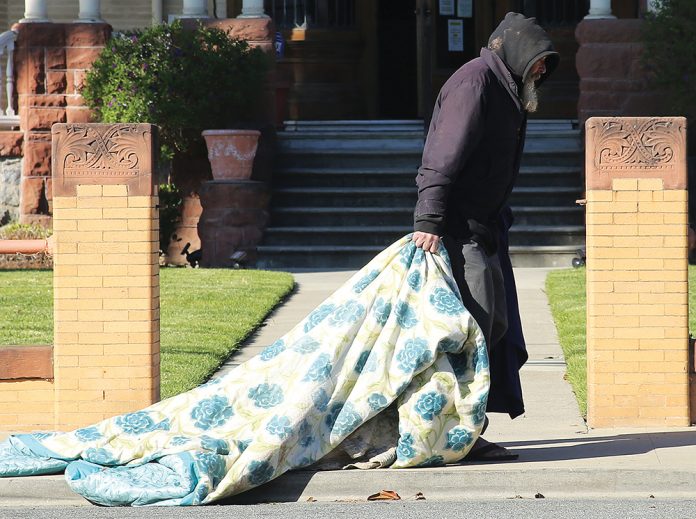
SANTA CRUZ COUNTY—Santa Cruz County has reduced homelessness among families by 59% compared to 2019, even as overall homelessness in the county increased by 6%.
That’s according to preliminary results of the county’s biannual Point-In-Time (PIT) count released Aug. 5 by the Housing for Health Partnership.
Santa Cruz County’s biannual PIT count, conducted on Feb. 28, provides an overview of homelessness over time in Santa Cruz County. The full 2022 report release is expected within two months.
The report also showed a 94% decrease in unsheltered homelessness and a 61% drop in the number of unsheltered youth.
The data shows that an estimated 2,299 people were experiencing homelessness at the time of the count, including 1,774 who were unsheltered, which is defined as living in a structure not made for habitation such as a vehicle.
While the numbers show a measure of success in the county’s efforts to house its homeless residents, the report also came with some dark clouds.
According to the report, the number of homeless veterans more than doubled from 2019, when that number was 151. And the number of “chronically homeless” people rose sharply from 403 in 2019 to 921 this year.
Additionally, the data shows significant increases in the numbers of homeless people who suffer from substance use disorders and mental illness, with those numbers at 1,073 and 818, respectively.
Homelessness among adults 25 and older was up 41%.
In a report Tuesday to the Santa Cruz County Supervisors, Housing for Health Division Director Robert Ratner said homelessness has worsened since June 30, when the county disbanded its temporary Covid-19 shelter system.
Ratner was giving a six-month update on the one-year-old Housing for a Healthy Santa Cruz program.
County officials say that the increases can be attributed in part to limited housing supply, limited community outreach and the stigma often associated with mental health conditions.
Funding is also a stumbling block, as the county faces an $8-12 million gap to get to the targeted 600-bed capacity, Ratner said.
The news was not all bad. According to Ratner, the county has met or nearly met its 26 milestones in addressing homelessness, including scoring $1.6 million worth of contracts related to eviction and homelessness prevention and moving 145 households into permanent homes.
The PIT count found just five families that were unsheltered on the night of the tally. Better still, no unsheltered children under age 18 were identified, which is a decrease of 51 from 2019.
The City of Santa Cruz plans to use some one-time state funds to create safe sleeping and shelter options for people living in the San Lorenzo Park “Benchlands” encampment.
Meanwhile, the county is working with the Central California Alliance for Health to increase shelter capacity by 80-100 beds, and to operate a 14-20 bed transitional housing program for young homeless people in unincorporated Watsonville.
The county’s Rehousing Wave, an $8 million partnership with various agencies and nonprofits, has since its May 2021 inception served more than 323 people, with 145 placed in permanent housing as of June 2022, Ratner said.
Moreover, the county has received some $53.5 million under Project Homekey, a state-run program that will fund the creation of new permanent supportive housing units through the Veterans Village in Ben Lomond and Park Haven Plaza in Soquel.
The county is also exploring a Homekey project application in unincorporated Watsonville.
The data came on the coattails of a report released in July by the National Low Income Housing Coalition that shows Santa Cruz County has the nation’s second-highest housing gap, defined as the hourly wage needed to pay rent on a fair market-rate residence.











